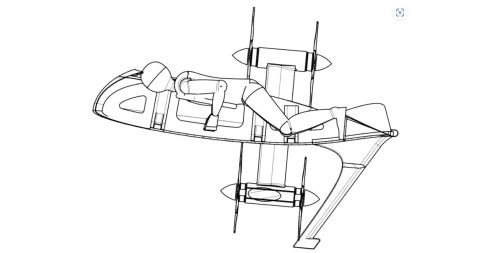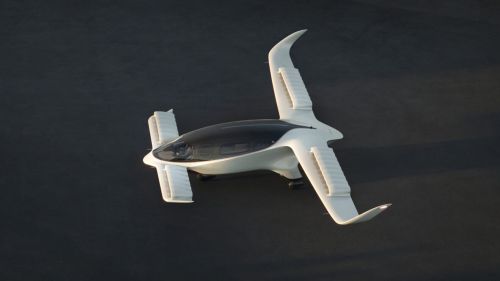Podcast: Play in new window | Download (Duration: 27:58 — 19.2MB)
Another personal eVTOL, cops flying BVLOS, military drones with facial recognition, a lethal drone designed in Australia, the Lilium Jet eVTOL, and moving air quietly.
UAV News
Is this one-seat flying saucer the future of flight?
ZEVA Aero designs and builds electric Vertical Takeoff and Landing (eVTOL) vehicles. The company’s flagship product is the Argon, based on a pre-existing airframe. But their Zero is a personal eVTOL for one person. It launches with the pilot standing, but the position is prone in horizontal flight. The 8-foot-wide flying saucer-shaped aircraft uses 8 propellers and is expected to cost $250,000.
A one-eighth-scale model has been flight-tested and tethered tests are underway with a full-sized prototype. Zeva says the prototype should be ready for remote-controlled flights within a month, and tests with a pilot could take place in three to six months.
Video: ZEVA 1/8 Scale Model flying
Welcome to Chula Vista, where police drones respond to 911 calls
The Chula Vista, California police department operates 29 drones. The program runs 10 hours a day, seven days a week using four launch sites. Officers routinely request aerial reconnaissance. More than 1,500 U.S. police departments use drones, mostly for search and rescue, to document crime scenes, and to chase suspects. About 225 police departments have FAA waivers to fly BVLOS. Privacy and civil liberty groups are taking notice.
US Military Signs Contract to Put Facial Recognition on Drones
The Air Force’s Drones Can Now Recognize Faces. Uh-Oh.
The U.S. Air Force plans to deploy facial recognition technology on drones. RealNetworks LLC has the contract to supply its SAFR technology on small drones used for special operations missions. RealNetworks says SAFR Scan is “the first full-featured intelligent biometric access controlled edge solution.”
Australian-designed lethal drone to be unveiled at Avalon Airshow
BAE STRIX
BAE Systems Australia unveiled the armed STRIX VTOL at Avalon 2023. It’s a hybrid, tandem wing, multi-domain and multi-role UAS that could be used for air-to-ground strike, persistent ISR, and as a loyal wingman for military helicopters. It can carry up to a 160kg payload over 800km with a variety of munitions. The collapsed footprint is only 2.6m x 4.5m (roughly 8.5 x 15 feet).
Lilium sees premium service entry for Lilium Jet eVTOL
Vertical flight takes a lot of energy and most eVTOL designs have significant aerodynamic drag. These limit, l eVTOL range. The Lilium Jet is designed to overcome those obstacles. The wing and canard aircraft have a good lift-to-drag ratio, and power requirements are low at cruise speed. Power for both vertical and horizontal flight comes from many small electric motors pushing air through variable nozzle ducts. Electric power comes from 330 Wh/kg density batteries. Service entry will be in the premium sector.
Whisper Aero Set to Reveal Details About Its Ultra-Quiet Propulsion System
Whisper Aero has been working on quiet propulsion technology for two years, looking for a noise reduction of about 20 dB for drones and electric fixed-wing aircraft. The company has provided no specifics but is expected to reveal details about its propulsors “toward the end of March or early April.” They’ve built a 55-pound demonstrator drone to test the concept. Reportedly, the company plans to offer different propulsion system models with different power outputs.


